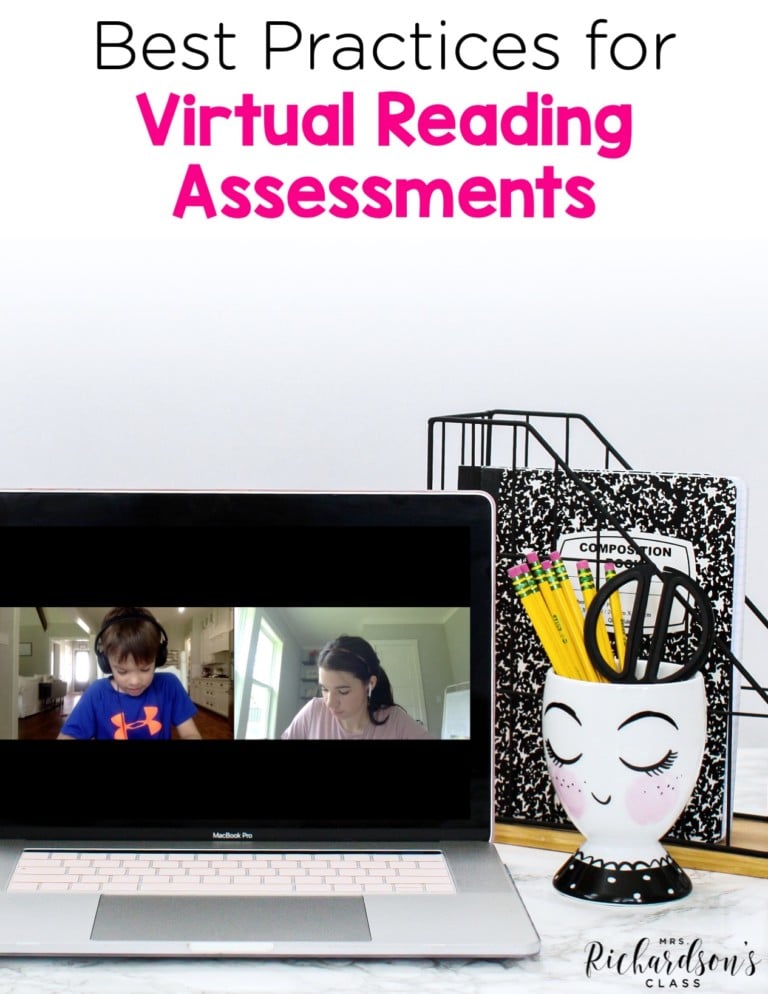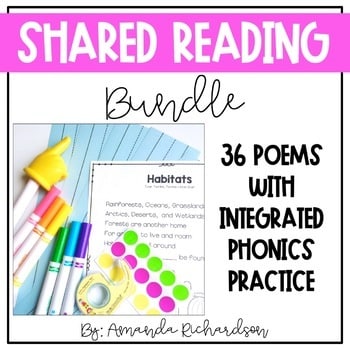

All three of my kids enjoy reading. This summer we have gone to the library several times and came home with a haul of books. Each time we come home, they immediately pick their favorite reading spot and are glued to their books. Sometimes I’m reading them aloud and other times the big kids are reading silently. I’ve been thinking a lot about how I can help them all develop and improve reading comprehension skills as young readers to continue to grow them into strong readers.
Comprehension is so important to reading! Without comprehension of text, we just have students who can read words but have no meaning for them. While we know that many more skills are needed before we can solely focus on comprehension ( phonemic awareness, phonics, decoding ability, fluency, etc.), we know that the ultimate goal of reading is to read for meaning. What are some ways we can teach and improve reading comprehension in our youngest readers early on?
One way we can teach comprehension to our youngest readers is by talking about the story with them when we read. When you read aloud to your class, stop and share your thinking about the story with them. You can think aloud about something the character has done or point out something you see in the pictures that they might not catch.
You can also point out if there’s something in the book that your class might relate to or if there is a similar event that happened in another book you recently read. The simplest of things-making connections! Additionally, you can point out what the character is working through and how they solve the problem.
Talking about the book you are reading with your class is a great way to get them involved in the story and help them remember what we are reading. You can also let them have a try at it after you have modeled it a few times. They can share with you, share with a partner, or share in a small group!
Children’s books are full of words they may not have been exposed to yet. This is one of the many reasons there is so much value in reading aloud to kids! Some of those words are explained in the text or pictures, but some are not. When you notice a word that might not yet be in their vocabulary, take a second and stop to talk about the word and its meaning, instead of continuing on.
This helps introduce them to new words and their meaning. When I was in the classroom I would always try to define these words for my students, use them in a sentence, and try to find places throughout the day or even the week to use them. Helping them understand tricky vocabulary builds their comprehension of the story! This is a skill we often forget about when it comes to comprehension!
Looking at the front and back of a book together is a great way to teach reading comprehension to students! It warms up their brain and gets them to start thinking about the story. The author and illustrator put so much helpful information on the front and back of a book. If there is a paragraph on the back of the book, make sure to read it to your students. The paragraph usually clues you into the characters and what will happen in the story.
Reading that paragraph to them activates their schema and gives them a preview of the book! Another good idea is to take a picture walk through the book. You don’t have to stop and comment or think aloud about every page, but doing it on a few pages definitely gives you an idea of what will happen in the story.
It is so important to teach kids to go back and reread when what they read doesn’t make sense. I used to always remind my students that when you go back and reread, make sure to read a little slower than you did the first time, so that you can really visualize what is going on in the story. Reminding students to check for understanding is a great comprehension strategy to model in front of your class during your interactive read aloud, especially in a book that might be a little high for your class.
Model thinking aloud and saying, “Hmm, I’m a little confused about what’s going on in this part of the story. Let me go back and reread.” When you model rereading in front of your class, it lets them know it’s ok for them to go back and reread as well.
I would remind my class to stop every few pages in their independent reading and retell the story to themselves. If this was easy for them, then they were comprehending the story and could continue reading. If they couldn’t retell what they had been reading over the last few pages, then they needed to go back and reread to make sure they were comprehending.
What are some things you have done to teach and improve reading comprehension to the young readers in your class? I’d love to hear your thoughts in the comments below! You can find a few more ways to support students struggling with comprehension HERE.
Want to try a free interactive read aloud lesson that will help you kick-start your read aloud time and prep students BEFORE even introducing a book? Try one FREE!

Want to use the latest research to boost your readers during small groups? This FREE guide is packed with engaging ideas to help them grow!

I’m a K-1 teacher who is passionate about making lessons your students love and that are easy to implement for teachers. Helping teachers like you navigate their way through their literacy block brings me great joy. I am a lifelong learner who loves staying on top of current literacy learning and practices. Here, you’ll find the tools you need to move your K-2 students forward!



| Cookie | Duration | Description |
|---|---|---|
| cookielawinfo-checkbox-analytics | 11 months | This cookie is set by GDPR Cookie Consent plugin. The cookie is used to store the user consent for the cookies in the category "Analytics". |
| cookielawinfo-checkbox-functional | 11 months | The cookie is set by GDPR cookie consent to record the user consent for the cookies in the category "Functional". |
| cookielawinfo-checkbox-necessary | 11 months | This cookie is set by GDPR Cookie Consent plugin. The cookies is used to store the user consent for the cookies in the category "Necessary". |
| cookielawinfo-checkbox-others | 11 months | This cookie is set by GDPR Cookie Consent plugin. The cookie is used to store the user consent for the cookies in the category "Other. |
| cookielawinfo-checkbox-performance | 11 months | This cookie is set by GDPR Cookie Consent plugin. The cookie is used to store the user consent for the cookies in the category "Performance". |
| viewed_cookie_policy | 11 months | The cookie is set by the GDPR Cookie Consent plugin and is used to store whether or not user has consented to the use of cookies. It does not store any personal data. |



3 Responses
Amanda,
Is there any way I can print off a copy of your Read it Here helpful Hints. My granddaughter has really had a very difficult time learning to read with all the remote learning caused by the Pandemic. I wanted to print a copy of Read it Here for my daughter to help my granddaughter with her reading.
Thanks,
Alice
Hi Alice! I am so sorry, but I am not sure what handout you are referring to. I think it said, “read it here” in the email I sent. But that just connected you to this blog post. 🙂 Let me know if you have any other questions! I am happy to help!!
Thank you Amanda.Those 4 steps to improve comprehension are right on the money! Truly valuable in other words. Thank you for the freebies too.